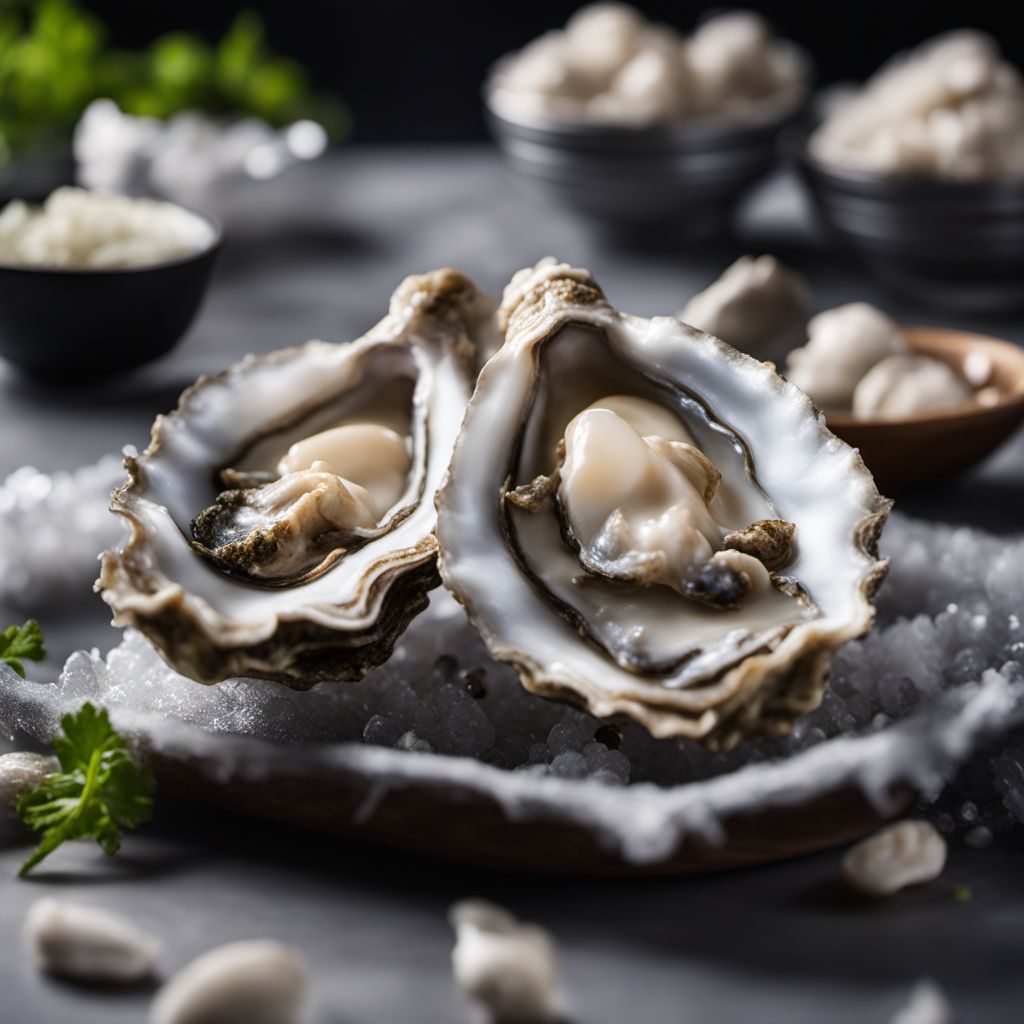
Ingredient
Oyster, pacific cupped
The Ocean's Delicacy
Pacific cupped oysters are characterized by their smooth, cup-shaped shells and tender, briny flesh. They have a mild, slightly sweet flavor with a hint of mineral notes and a creamy, buttery texture. These bivalve mollusks are often enjoyed raw on the half shell, but they can also be cooked in various preparations like grilling, frying, or steaming.
Origins and history
Pacific cupped oysters have a rich history and cultural significance, particularly in coastal regions around the world. They have been consumed for centuries and are often associated with luxury and indulgence. Oyster farming and harvesting have become important industries, supporting local economies and providing a sustainable source of seafood.
Nutritional information
Pacific cupped oysters are low in calories and fat, while being rich in essential nutrients such as protein, iron, zinc, and vitamin B12. They are also a good source of omega-3 fatty acids, which are beneficial for heart health.
Allergens
May contain shellfish allergens.
How to select
When selecting Pacific cupped oysters, choose ones that are tightly closed or slightly open. Avoid oysters with cracked or damaged shells, as they may be spoiled. Fresh oysters should have a clean, briny smell and should feel heavy for their size. It is also recommended to purchase oysters from reputable sources to ensure their quality and safety.
Storage recommendations
To maintain the freshness of Pacific cupped oysters, store them in the refrigerator at a temperature between 35°F and 45°F (1.7°C and 7.2°C). Keep them in a bowl or container with a damp cloth or paper towel to prevent them from drying out. It is best to consume oysters within a day or two of purchase for optimal flavor and quality.
How to produce
Pacific cupped oysters are typically harvested from the wild or cultivated in oyster farms. They require specific environmental conditions, including clean water and appropriate salinity levels, to thrive. Oyster farming involves suspending oysters in mesh bags or cages in coastal waters, allowing them to feed on natural plankton and grow to market size.
Preparation tips
To prepare Pacific cupped oysters, start by scrubbing the shells under cold running water to remove any dirt or debris. Use an oyster knife to carefully pry open the shells, being cautious not to spill the precious liquor inside. Serve them raw on the half shell with lemon wedges, mignonette sauce, or cocktail sauce. Alternatively, they can be grilled, fried, or steamed to enhance their flavors. Remember to discard any oysters that do not open during cooking, as they may be unsafe to eat.
Substitutions
Clams, mussels, or scallops can be used as substitutes for Pacific cupped oysters in recipes. They offer a similar briny flavor and can be cooked in various preparations. However, the texture may differ slightly.
Culinary uses
Pacific cupped oysters are commonly used in raw preparations such as oyster shooters, ceviche, or sushi. They are also popular in cooked dishes like oyster stew, Rockefeller, or po' boys. Their unique flavor and texture make them a favorite ingredient in seafood-centric cuisines around the world.
Availability
Pacific cupped oysters are commonly available in coastal regions and countries with access to clean ocean waters. They are cultivated in oyster farms and can also be found in seafood markets or specialty stores.


